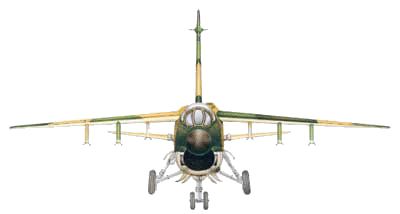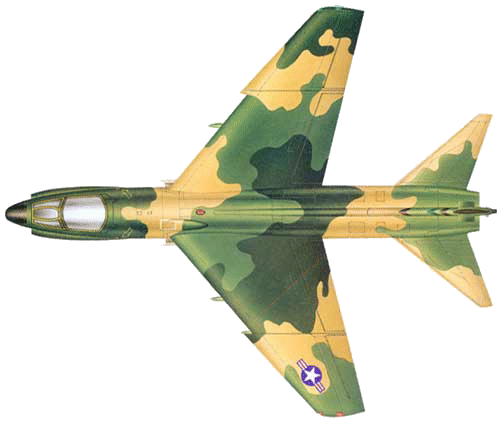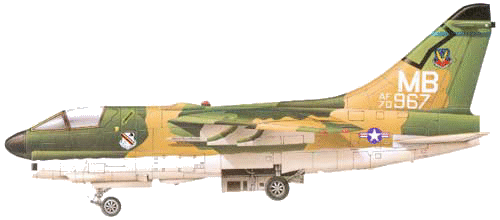|

LTV A-7D Corsair

Planned in 1963 as the successor to the
Douglas A-4 Skyhawk for the US Navy and Marines, the A-7 Corsair II proved
so effective that it was also chosen by the USAF to replace the F-100
Super Sabre and F-105 Thunderchief. The prototype flew for the first time
on September 27, 1965, and production commenced on 199 of the A-7A
version. This was followed by the more powerful A-7B (196 machines, first
flight February 6, 1968). The variant designed for the USAF was the A-7D,
which took off on April 5 furnished with a different kind of engine and
modified both with regard to armament and electronics. Deliveries of the
459 models of the A-7D which had been ordered took place from September
1970 to December 1976. In 1969 a new version was produced for the US Navy,
the A-7E, which became the principal type built (after the first 67
machines, known as A-7C), with 529 planes up to March 1981. Among minor
variants were the TA-7C and the A-7K, two-seater trainers for possible
operational use by the US Navy and the US Air National Guard; and the A-7H
and A-7P for Greece and Portugal. It was much used in Vietnam; the first
A-7As received their baptism of fire on December 4, 1967.



On August 15, 1973, the day when
hostilities ended between the United States and North Vietnam, an A-7D
Corsair of the USAF carried out the last attack on territory north of the
20th parallel. Although this was coincidental, there can be no doubt that
this type of aircraft was, during the second half of the war, the most
effective instrument of American tactical bombing of North Vietnam.
Designed by Vought at the behest of the US Navy, both for its own
requirements and those of the Marine Corps, who used it in the A, B and E
versions, it was also chosen to replace the Thunderchief by the USAF, who
deployed it in Vietnam in the D version, with the 354th TFW, based at
Korat in Thailand, from the end of 1971. The first Marine A-7As went into
action in December 1967, being assigned to the VA-147 Squadron on the
aircraft carrier USS Ranger, and soon proved themselves worthy of the name
Corsair, given them in memory of the famous World War Two fighter.
Furthermore, the A-7s could be used more intensively than other
carrier-based planes because, for the first time, they were equipped with
a round-the-clock landing system. Even before the A-7Ds of the USAF became
operative, the US Navy A-7Es, improved versions, had reached Vietnam. From
the beginning of August 1973, Marine Corsairs carried out more than 90,000
missions, losing only 54 machines as a result of enemy action. The USAF,
whose first A-7Ds only went into action on March 29, 1972, had no time to
exploit their exceptional qualities.
SPECIFICATIONS
Span: 38 ft. 8 in.
Length: 46 ft. 1 in.
Height: 16 ft. 1 in.
Weight: 39,325 lbs. loaded
Armament: One M61A1 20mm rapid-fire cannon plus 15,000 lbs. of
mixed ordnance
Engine: One Allison TF41 turbofan engine of 14,250 lbs. thrust
Crew: One
Cost: $2,860,000
PERFORMANCE
Maximum speed: 663 mph.
Cruising speed: 545 mph.
Range: 3,044 miles
Service Ceiling: 33,500 ft.
|
